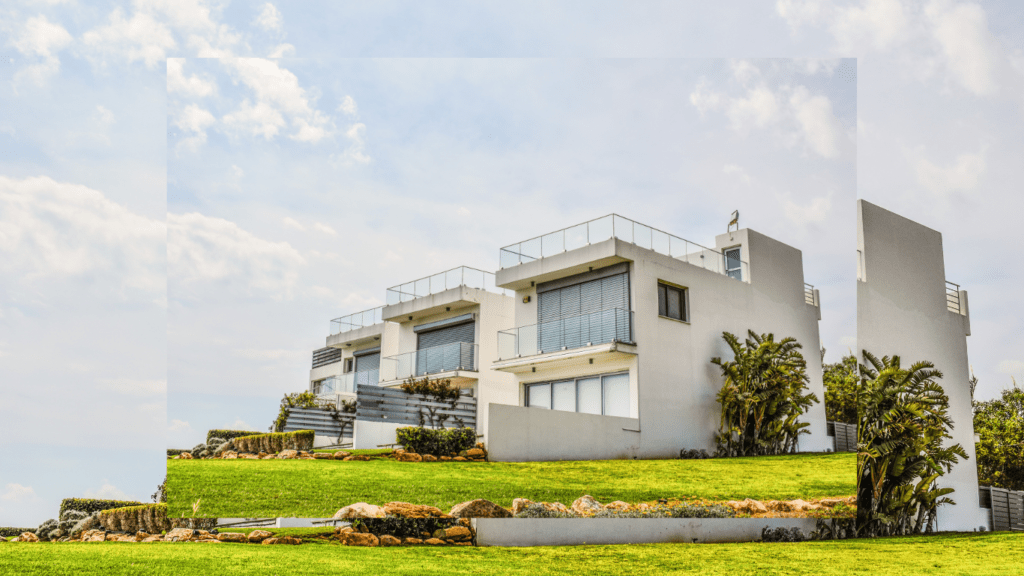Urbanization is reshaping the world as we know it, with cities evolving at a rapid pace to accommodate the growing population. As an investor, understanding these urbanization trends is crucial for identifying lucrative opportunities in real estate, infrastructure, and other sectors. The way cities are developing not only reflects societal changes but also presents a wealth of possibilities for those looking to capitalize on the transformation.
From the rise of smart cities to the revitalization of urban centers, the landscape of urban areas is constantly shifting. As I delve into the evolving dynamics of urbanization, I’ll explore the implications for investors seeking to navigate this ever-changing terrain. Stay tuned to discover how these trends can shape investment decisions and unlock potential in the dynamic world of urban development.
Exploring Urbanization Trends
Urbanization trends play a pivotal role in shaping investment opportunities and economic landscapes. As cities evolve to accommodate expanding populations, investors need to stay abreast of these trends to capitalize on emerging real estate and infrastructure developments. Understanding how urbanization impacts different sectors can provide valuable insights for strategic investment decisions.
- Population Growth and Urban Expansion
Urbanization is closely linked to population growth, with more people migrating to urban areas in search of better opportunities. This influx of residents leads to the expansion of cities, creating a demand for new housing, commercial spaces, and transportation infrastructure. For investors, this trend signifies a growing market for real estate projects and urban development initiatives. - Technological Advancements and Smart Cities
The concept of smart cities is gaining momentum as urban areas embrace technology to enhance efficiency and sustainability. From IoT-enabled infrastructure to data-driven decision-making, smart cities leverage innovation to improve quality of life for residents. Investors keen on future-proofing their portfolios should explore opportunities within the burgeoning smart city ecosystem. - Infrastructure Revitalization and Urban Renewal
Many cities are undergoing revitalization efforts to transform aging infrastructure and enhance urban aesthetics. Urban renewal projects aim to breathe new life into historical neighborhoods, create green spaces, and improve connectivity. Investors participating in these initiatives can contribute to the revitalization of urban centers while reaping the benefits of property value appreciation. - Sustainable Development and Environmental Conservation
With environmental concerns taking center stage, sustainable development practices are integral to urbanization trends. Investors focusing on eco-friendly projects, such as green buildings and renewable energy installations, align with the global push towards environmental conservation. By incorporating sustainability into their investment strategies, they can tap into the growing demand for environmentally conscious urban solutions. - Navigating Evolving Urban Dynamics
Staying informed about evolving urban dynamics is crucial for investors looking to thrive in the ever-changing urban landscape. By monitoring demographic shifts, technological innovations, and regulatory changes, investors can identify emerging opportunities and mitigate potential risks. Adapting to new urbanization trends positions investors to make informed decisions that drive long-term success in the dynamic realm of urban development.
As urbanization trends continue to shape the future of cities worldwide, investors need to remain proactive in understanding these trends to leverage investment opportunities effectively. From smart city initiatives to sustainable urban development projects, navigating the evolving landscape of urbanization requires a strategic approach to capitalize on the transformative power of urban growth.
Impact of Urbanization on Infrastructure Investments
Urbanization has a significant impact on infrastructure investments, shaping opportunities for strategic financial growth. As cities evolve, so do the demands for robust infrastructure to support their expanding populations and economic activities.
Smart Cities Initiatives
Smart cities initiatives are at the forefront of urban development, integrating advanced technologies to enhance the quality of life for residents. These initiatives focus on improving efficiency, sustainability, and connectivity through the implementation of innovative solutions such as IoT devices, data analytics, and renewable energy sources. Investors can leverage the growing demand for smart infrastructure to participate in projects that drive urban innovation and foster economic growth.
Transportation Development
Transportation development plays a crucial role in urban infrastructure investments, facilitating mobility and accessibility within cities. Projects aimed at improving public transportation systems, building new highways, and enhancing connectivity through digital platforms are vital for addressing the increasing transportation needs of urban dwellers. Investors can capitalize on transportation infrastructure projects to support urban expansion and meet the evolving mobility demands of modern cities.
Social and Economic Implications of Urbanization
Exploring the social and economic implications of urbanization is crucial for investors looking to capitalize on evolving city landscapes. As cities grow and evolve, various factors come into play, shaping the investment landscape and offering both opportunities and challenges.
Population Dynamics:
Population growth is a driving force behind urban expansion, creating a surge in demand for real estate developments and infrastructure projects. Investors need to closely monitor population trends to identify lucrative investment opportunities in growing urban areas.
Smart City Initiatives:
The rise of smart cities presents new investment avenues fueled by technological advancements and urban renewal projects. These initiatives focus on integrating advanced technologies to improve efficiency, sustainability, and connectivity, creating attractive opportunities for savvy investors.
Sustainable Development:
The emphasis on sustainable development and environmental conservation in urban planning underscores the need for eco-friendly investment strategies. Investors can align themselves with projects that prioritize environmental responsibility to capitalize on the growing demand for sustainable urban solutions.
Infrastructure Investments:
Urbanization significantly impacts infrastructure investments, shaping the financial landscape as cities adapt to accommodate growing populations and economic activities. Investing in transportation development, such as enhancing public transportation systems and digital connectivity platforms, offers avenues for financial growth.
By understanding and leveraging these social and economic implications of urbanization, investors can position themselves strategically to navigate the dynamic urban landscape effectively. Staying informed on urban development trends and aligning investment strategies with the evolving needs of cities can lead to long-term financial success in this ever-changing environment.
Sustainable Urban Development Opportunities
In the realm of urbanization trends, sustainable urban development presents me with promising opportunities as an investor. Expanding cities are increasingly focusing on sustainability to address environmental concerns and enhance quality of life. Sustainable urban development revolves around creating cities that are ecologically responsible, resource-efficient, and resilient to future challenges.
One key avenue for sustainable urban development is green infrastructure projects. These initiatives focus on integrating natural elements into urban landscapes to improve air and water quality, mitigate flooding, and enhance biodiversity. Investments in green infrastructure not only contribute to environmental conservation but also offer long-term economic benefits by reducing maintenance costs and improving overall property values.
Another aspect of sustainable urban development that I find compelling as an investor is the rise of eco-friendly buildings and renewable energy solutions. Green buildings, designed to be energy-efficient and environmentally friendly, are becoming increasingly popular in urban areas. Investing in green real estate projects not only aligns with sustainability goals but also caters to the growing demand for eco-conscious living spaces.
Furthermore, sustainable transportation infrastructure presents lucrative opportunities for investors looking to support urban development initiatives. Investing in public transportation systems, bike-sharing programs, and electric vehicle charging stations not only reduces carbon emissions but also enhances mobility and accessibility within cities. As urban populations continue to grow, the demand for sustainable transportation solutions is expected to rise, providing investors with a chance to contribute to sustainable urban mobility.
Overall, sustainable urban development offers me a diverse range of investment prospects that not only align with environmental goals but also position me strategically in a rapidly evolving urban landscape. By incorporating sustainable practices into my investment strategies, I can contribute to the creation of healthier, more resilient cities while pursuing long-term financial success.



 Deborahn McKenneyster, the founder of Residence Resale Tactics, is a dynamic leader with a deep-rooted passion for the real estate market. With years of experience in the industry, Deborahn has cultivated a reputation for her strategic acumen and innovative approach to property resale. Her journey began as a real estate agent, where she quickly recognized the need for a platform that provides actionable insights and practical strategies for agents, investors, and homeowners alike. Deborahn’s vision was to create a resource that not only offers the latest market news but also equips users with the tools to navigate complex transactions and achieve success in a competitive field.
Under her leadership, Residence Resale Tactics has become a trusted source of information for real estate professionals, delivering expert guidance on everything from market trends and investment strategies to creative marketing techniques. Deborahn's commitment to empowering others is evident in her dedication to curating content that is both timely and relevant, helping clients enhance their knowledge and make informed decisions. Her innovative mindset and passion for real estate continue to drive the platform forward.
Deborahn McKenneyster, the founder of Residence Resale Tactics, is a dynamic leader with a deep-rooted passion for the real estate market. With years of experience in the industry, Deborahn has cultivated a reputation for her strategic acumen and innovative approach to property resale. Her journey began as a real estate agent, where she quickly recognized the need for a platform that provides actionable insights and practical strategies for agents, investors, and homeowners alike. Deborahn’s vision was to create a resource that not only offers the latest market news but also equips users with the tools to navigate complex transactions and achieve success in a competitive field.
Under her leadership, Residence Resale Tactics has become a trusted source of information for real estate professionals, delivering expert guidance on everything from market trends and investment strategies to creative marketing techniques. Deborahn's commitment to empowering others is evident in her dedication to curating content that is both timely and relevant, helping clients enhance their knowledge and make informed decisions. Her innovative mindset and passion for real estate continue to drive the platform forward.